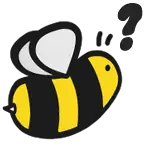One of the most distinctive tools in a beekeeper’s arsenal is the smoking tool. This tool, which produces smoke, plays a crucial role in calming bees during routine maintenance and honey harvesting. The use of smoke in beekeeping has a long history that dates back to ancient civilizations. Greeks, Romans, and Native Americans employed smoky fires to gather honey from hives.
Over time, beekeepers have refined the art of creating smoke, using various materials and innovative tools. In this article, we will explore the history and science behind the use of smoke in beekeeping, its effects on bees, reasons for its application, types of smoking tools used, safety precautions, and alternative techniques. By understanding the significance of smoke and its proper utilization, beekeepers can maintain the safety and productivity of their hives while ensuring the well-being of both bees and themselves.
Beekeepers use smoke as it triggers a stress response in bees, making them more docile and less likely to sting. It also disrupts their communication, reducing aggression. This makes hive inspections and honey harvesting safer for both the bees and the keeper alike.
History of the use of smoke in Beekeeping
The use of smoke in beekeeping can be traced back to ancient times. The Greeks and Romans used a smoky fire to drive bees out of their hives in order to harvest honey. The Native Americans used a similar technique to gather wild honey from hives in trees. Over time, beekeepers began to use different materials to create smoke, including burning cotton, burlap, and other materials.
Today, beekeepers use a variety of tools to create smoke, including traditional smokers made from bellows and tin cans, as well as more modern alternatives such as electric smokers and vaporizers. These tools have evolved to become more efficient and effective at producing smoke.
How smoke affects bees
Smoke has a powerful effect on bees. When a beekeeper applies smoke to a hive, it triggers a physiological response in the bees, causing them to think that their hive is on fire. In response, the bees will begin to gorge themselves on honey, which makes them more docile and less likely to sting.
Smoke also affects bee behavior by disrupting their communication and ability to smell. Bees use pheromones to communicate, and the smoke interferes with this process, making it more difficult for them to coordinate their defense or attack. The smoke also masks the bees’ natural scent, making it more difficult to recognize the beekeeper as a threat.
Scientists believe that smoke works by activating a stress response in bees that temporarily inhibits their aggressive behavior. This response is similar to the “fight or flight” response that humans experience when they are under stress. By triggering this response, smoke helps to calm the bees and make them more manageable during hive inspections and honey harvesting.
Reasons why beekeepers use smoke
Beekeepers use smoke for several reasons. The first and most important reason is to protect themselves and others from bee stings. Bees are naturally defensive of their hives and will attack anything that they see as a threat. When a beekeeper approaches a hive without using smoke, the bees may become agitated and aggressive, making it difficult and dangerous to work with them.
The second reason why beekeepers use smoke is to calm the bees. As we mentioned earlier, smoke triggers a stress response in bees that makes them more docile and less likely to sting. This is especially important during hive inspections and honey harvesting, as it allows the beekeeper to work more safely and efficiently.
Finally, beekeepers use smoke to improve honey production. When bees sense a threat, they become defensive and start to prepare for the worst. This includes gorging themselves on honey in anticipation of a possible move or relocation. By using smoke to trigger this response, beekeepers can encourage bees to consume more honey, which leads to higher honey production.
Types of smoking tools used in Beekeeping
There are several types of smoking tools used in beekeeping, each with its own advantages and disadvantages. Traditional smoking tools include bellows and tin cans, which are filled with burning materials to produce the smoke.
There are a few different types of fuels that can be used for bee smoking. Some of the most common types are burlap, wood pellets, and dried grasses/hay. Other types of smoker fuel include pine needles, herbs, some fruit peels, and commercial smoker pellets. It is important to avoid using synthetic materials or paper that has been bleached, as these materials can be harmful to bees as they may contain chemicals that become harsh when burned.
Really, what you want are natural materials that smolder well without much heat, making them ideal for use as fuel sources in a bee smoker. This is because the smoke produced is cool and gentle, which is essential for calming the bees without harming them. Below are some examples of natural materials that can be used as fuel in a bee smoker:
 Pine needles: Pine needles contain resin and oils that smolder very well, producing a non-acrid smoke that is ideal for use in a bee smoker. Pine needles are usually pretty available in most places in the world, making this an easy, inexpensive choice.
Pine needles: Pine needles contain resin and oils that smolder very well, producing a non-acrid smoke that is ideal for use in a bee smoker. Pine needles are usually pretty available in most places in the world, making this an easy, inexpensive choice.
 Dried grass: Dried grass, including lawn clippings, hay, and straw, can be used as fuel in a bee smoker. These materials produce a gentle, non-toxic smoke that is ideal for calming bees.
Dried grass: Dried grass, including lawn clippings, hay, and straw, can be used as fuel in a bee smoker. These materials produce a gentle, non-toxic smoke that is ideal for calming bees.
 Dried herbs: Dried herbs such as lavender, thyme, mint, and rosemary make for a lovely-smelling smoke that remains non-toxic to bees. They’re relatively easy to find, either fresh or dried. Combining herbs with dried grass or hay is a nice way to add a bit of scent to the smoke.
Dried herbs: Dried herbs such as lavender, thyme, mint, and rosemary make for a lovely-smelling smoke that remains non-toxic to bees. They’re relatively easy to find, either fresh or dried. Combining herbs with dried grass or hay is a nice way to add a bit of scent to the smoke.
 100% cotton: Old t-shirts or blue jeans made from 100% cotton can be rolled up and burned, as long as they are not heavily dyed. You can also use raw cotton husks and debris, but it’s a little harder to find.
100% cotton: Old t-shirts or blue jeans made from 100% cotton can be rolled up and burned, as long as they are not heavily dyed. You can also use raw cotton husks and debris, but it’s a little harder to find.
 Untreated burlap: Burlap or hessian that is untreated makes a great natural bee smoker fuel. It smolders instead of outright burning, but also ignites faster than cotton, making it one of the best fuels out there in many beekeepers’ opinions.
Untreated burlap: Burlap or hessian that is untreated makes a great natural bee smoker fuel. It smolders instead of outright burning, but also ignites faster than cotton, making it one of the best fuels out there in many beekeepers’ opinions.
 Commercial smoker pellets: Commercial smoker pellets can be purchased that are formulated to be safe for beekeepers and their bees. These pellets are made from natural materials and are easy to use, producing a consistent amount of gentle smoke.
Commercial smoker pellets: Commercial smoker pellets can be purchased that are formulated to be safe for beekeepers and their bees. These pellets are made from natural materials and are easy to use, producing a consistent amount of gentle smoke.
Lots of beekeepers will use a combination of any of the above, packing old cotton jeans with Hay, or adding pine needles to hay or dried grass. There’s not really any 100% right answer here, so long as you use one or some of the materials above, personal preference is how you should decide!
Modern smoking tools also include electric smokers and vaporizers, which are more efficient and effective at producing smoke. Electric smokers use an electric heating element to generate smoke, while vaporizers use heated glycerin to create smoke.
Regardless of the type of smoking tool used, it is important for beekeepers to use them properly and safely. This includes wearing protective clothing and equipment, handling and storing smoking tools properly, and using smoke in a well-ventilated area.
Smoke-free alternatives to beekeeping
While smoke is an effective tool for managing bees, it is not the only technique available to beekeepers. Some beekeepers prefer to use smoke-free techniques, such as the use of essential oils or sugar water spray to calm the bees.
However, these techniques may not be as effective as smoke and may require more frequent application. They also have their own risks and disadvantages, such as the potential for attracting pests or causing mold growth in the hive.
Safety precautions when using smoke in beekeeping
Using smoke in beekeeping can be dangerous if proper safety precautions are not taken. Beekeepers should always wear protective clothing and equipment, including a veil, gloves, and a bee suit or jacket. They should also handle and store smoking tools properly, and use smoke in a well-ventilated area.
Beekeepers should also be aware of the potential risks associated with smoking, such as the risk of fire or explosion. Smoking tools should never be left unattended and should be kept away from flammable materials or smoker fuels such as dry grass or hay.
Why beekeepers use smoke, summed up!
So, the use of smoke in beekeeping is an effective and time-tested technique for managing bees. Smoke helps to protect beekeepers from bee stings, calms the bees, and improves honey production. While there are alternative techniques available, smoke remains the preferred method for most beekeepers. However, it is important to use smoke safely and responsibly to ensure the health and well-being of the bees and the beekeeper.
FAQs
How long does the effect of smoke last on bees?
The effect of smoke on bees typically lasts for 10-15 minutes, depending on the strength and amount of smoke used.
Can smoke harm bees or affect the taste of honey?
When used properly, smoke does not harm bees or affect the taste of honey. However, overuse of smoke can cause stress to the bees, which may impact their health and productivity.
Can smoking tools cause fires or explosions?
Yes, smoking tools can cause fires or explosions if not handled properly. Beekeepers should never leave smoking tools unattended and should keep them away from flammable materials such as dry grass or hay.


![3 Big Mistakes Beginner Beekeepers Make [And How To Avoid Them!]](https://beekeepingabc.com/wp-content/uploads/2020/11/3-mistakes-beginner-beekeepers-make-90x75.jpg)

![Move over ducks, Queen Bees quack too! [Here’s Why]](https://beekeepingabc.com/wp-content/uploads/2020/06/queen-bee-90x75.png)
![The Flow Hive 2 Review [ Vs. The Classic Flow Hive]](https://beekeepingabc.com/wp-content/uploads/2020/02/Flow-Hive-2-90x75.jpg)
![How Bees Fly [10 Facts About How, When, and Why]](https://beekeepingabc.com/wp-content/uploads/2019/12/A-Bee-Flying-90x75.jpg)